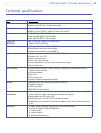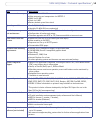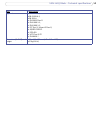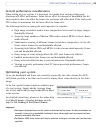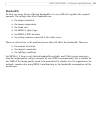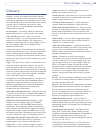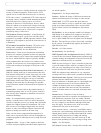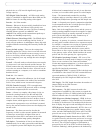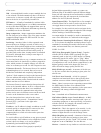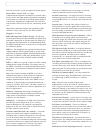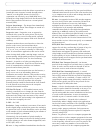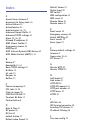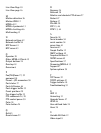
68
AXIS 243Q Blade - Glossary
supplies the requested HTML pages or files to the client
(web browser).
Simplex - In simplex operation, a network cable or
communications channel can only send information in
one direction. See also Full-duplex.
SMTP (Simple Mail Transfer Protocol) - Used for sending
and receiving e-mail. However, as it is "simple," it is
limited in its ability to queue messages at the receiving
end, and is usually used with one of two other protocols,
POP3 or IMAP. These other protocols allow the user to
save messages in a server mailbox and download them
periodically from the server.
SMTP authentication - An extension of SMTP, where the
client is required to log into the mail server before or
during the sending of email. It can be used to allow
legitimate users to send email while denying the service to
unauthorized users, such as spammers.
SNMP (Simple Network Management Protocol) - SNMP
forms part of the Internet Protocol suite, as defined by the
Internet Engineering Task Force. The protocol can support
monitoring of network-attached devices for any
conditions that warrant administrative attention.
Sockets - Sockets are a method for communication
between a client program and a server program over a
network. A socket is defined as "the endpoint in a
connection." Sockets are created and used with a set of
programming requests or "function calls" sometimes
called the sockets application programming interface
(API).
SSL/TSL
(Secure Socket Layer/Transport Layer Security) - These
two protocols (SSL is succeeded by TSL) are cryptographic
protocols that provide secure communication on a
network. SSL is commonly used over HTTP to form
HTTPS, as used e.g. on the Internet for electronic financial
transactions. SSL uses public key certificates to verify the
identity of the server.
Subnet & subnet mask - A subnet is an identifiably
separate part of an organization's network. Typically, a
subnet may represent all the machines at one geographic
location, in one building, or on the same local area
network (LAN). Having an organization's network divided
into subnets allows it to be connected to the Internet with
a single shared network address.
The subnet mask is the part of the IP address that tells a
network router how to find the subnet that the data
packet should be delivered to. Using a subnet mask saves
the router having to handle the entire 32-bit IP address; it
simply looks at the bits selected by the mask.
Switch - A network device that connects network
segments together, and which selects a path for sending a
unit of data to its next destination. In general, a switch is
a simpler and faster mechanism than a router, which
requires knowledge about the network and how to
determine the route. Some switches include the router
function. See also Router.
TCP (Transmission Control Protocol) - TCP is used along
with the Internet Protocol (IP) to transmit data as packets
between computers over the network. While IP takes care
of the actual packet delivery, TCP keeps track of the
individual packets that the communication (e.g. requested
a web page file) is divided into, and, when all packets
have arrived at their destination, it reassembles them to
re-form the complete file.
TCP is a connection-oriented protocol, which means that
a connection is established between the two end-points
and is maintained until the data has been successfully
exchanged between the communicating applications.
advantages in using this particular mode of recording.
UDP (User Datagram Protocol) - UDP is a
communications protocol that offers limited service for
exchanging data in a network that uses the Internet
Protocol (IP). UDP is an alternative to the Transmission
Control Protocol (TCP). The advantage of UDP is that it is
not required to deliver all data and may drop network
packets when there is e.g. network congestion. This is
suitable for live video, as there is no point in
re-transmitting old information that will not be displayed
anyway.
Unicast - Communication between a single sender and a
single receiver over a network. A new connection is
established for each new user. See also Multicast.
UPnP
TM
- A set of computer network protocols that allows
the automatic peer-to-peer detection of devices on the
network. UPnP is promoted by the UPnP Forum.
URL (Uniform Resource Locator) - An "address" on the
network.
Video camera - See Network camera and CCTV video
camera.
Video encoder (video server) - A video encoder/server
digitizes analog video signals and sends digital images
directly over an IP network, such as a LAN, intranet or the
Internet. In effect, it turns an analog video system into a
network video system and enables users to view live
images using a web browser or application software on
any local or remote computer on a network.
Video management software - Video management
software supplies the means for monitoring, analyzing
and recording network video. In its simplest form, it offers
live viewing, storage and retrieval of video sequences.
Advanced applications may also provide support for
recording of live video from multiple devices, different
recording modes, search functions, remote access via a
web browser, control of PTZ devices, etc.
VMD (Video Motion Detection) - Video Motion detection
defines activity (motion) in a monitored scene by



